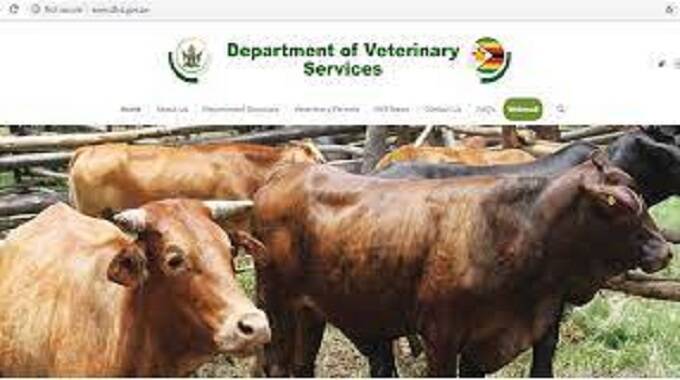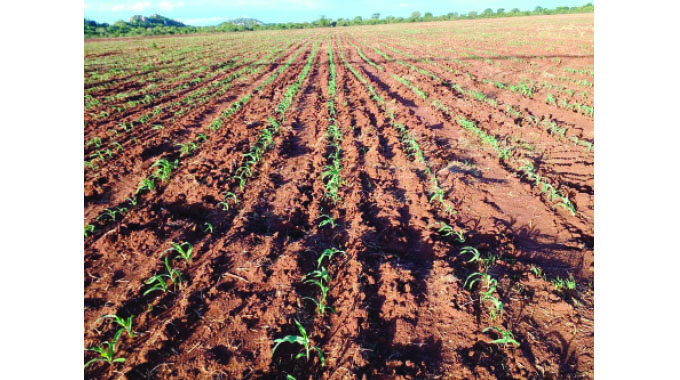WATCH: January Disease leaves farmers broke

Peter Matika and Sukulwenkosi Dube-Matutu, Chronicle Reporters
THE acoustic chorales of livestock have ceased to be a melodious song at the crack of every dawn for farmers in PBS village in Fort Rixon, Insiza District, Matabeleland South Province.
Instead, they are awakened to the caws of birds of prey that feast on unclaimed carcasses of cattle that succumb to theileriosis – better known as January disease.
January disease is transmitted by ticks and is more prevalent during the rainy season. Affected animals usually collapse and die within a few days.

According to the Department of Veterinary Services, tick-borne diseases are responsible for about 60 percent of annual losses in livestock. January disease is a notifiable disease in Zimbabwe and when farmers suspect its presence, they are compelled by the law to make a report to the Department of Veterinary Services.
Government has introduced a plethora of measures to fight the deadly disease including dip tank rehabilitation, production of local vaccines, dipping, and introduction of the Presidential Tick Grease Programme among others.
Following these measures, the country has witnessed a 50 percent reduction in the number of tick-borne diseases. The Presidential Tick Grease Programme seeks to curb tick-borne diseases, particularly theileriosis.
The programme is in line with the National Development Strategy 1 (NDS1), which is prioritising animal health and production through strengthening farmer knowledge, and skills in livestock production and health so as to enhance productivity.
In Zimbabwe, cattle are a common source of wealth and draught power, and Government estimates that about 90 percent of the country’s nearly 5,5 million cattle are owned by small-scale farmers.

National Development Strategy 1 (NDS1)
Since the beginning of the festive season, a number of farmers and villagers in Insiza District lost their herds of cattle to January disease. The impoverished villagers have been forced to forfeit their kraals.
With little or nothing to salvage, some villagers have been forced to sell their animals while others slaughtered the remaining beasts. However, not all are lucky, as they have been forced to dry the meat to make biltong as a way of preservation.
When a Chronicle news crew visited Fort Rixon, the sadness on the faces of the affected farmers painted a gloomy picture.
“This is a serious threat to our livelihood, and we have never experienced such a tragedy. We have suffered great losses and this is not a good sign at all,” said Mr Nkani Khoza, a farmer.
“This disease has literally eroded all investments. We are in dire straits and have no idea how we are going to redeem ourselves from this situation.”
Narrating how the disease broke out, Mr Khoza said a fellow villager bought 28 heifers from Masvingo, where the disease was initially detected.
“A known villager bought 28 heifers from Masvingo and smuggled them to the province without clearance from the Department of Veterinary Services. This is how the disaster began,” he said.
“A few days later, the villager including some of his neighbours started losing their cattle. Mind you, once your cattle are affected there is little or nothing that you can do to save them.”
Mr Khoza said when the livestock continued to deteriorate, they engaged the Department of Veterinary Services which concluded that it was theileriosis.
“When the veterinary officer came, we told him that we suspected a local farmer who had recently bought cattle was behind the outbreak. He immediately sold the remainder of his cattle, leaving the rest of the villagers at the mercy of the pestilence,” he said.
Mr Khoza said some of the livestock died while grazing in the bushes.
He said while they implemented prevention measures to curb the spread of the disease, some opportunists took advantage of the situation.

Fort Rixon farmers and villagers lose cattle
“We are at the mercy of hoarders. Once they caught wind of the situation they started coming to our district. Since villagers were afraid of losing entirely, they sold their remaining livestock, some for as little US$100,” said Mr Khoza.
“We desperately need assistance and the Government should intervene. As it is, we haven’t even completed farming and we have lost the draught power.”
Another villager, Mr Eden Ncube, said they are struggling to come to terms with the situation.
“Losing an entire herd in just a number of days is just shocking. A day hardly passes without hearing of the death of an animal in the village. Even a bull that was donated to us for breeding succumbed to the disease,” he said.
“Experts from the Department of Veterinary Services advised us to religiously dip our cattle, but this has not worked, and to make matters worse not all of us can afford the dipping chemicals.”
He said some unscrupulous buyers are flooding the area to cash in on the situation.

“There is a woman who came and bought 300 cattle in a few days. This is really a hard time for us and we appeal to the Government to intervene and save the day,” said Mr Ncube.
Matabeleland South provincial veterinary services director, Dr Enat Mdlongwa said over 80 cattle in Insiza District succumbed to theileriosis since the beginning of the month.
Last year about 700 cattle succumbed to theileriosis while about 200 animals died from black leg in the province.
A majority of livestock farmers in Matabeleland South, particularly in communal areas, have adopted livestock farming as a commercial entity, a development that is set to boost the province’s herd and contribute to the growth of the national herd.
As part of efforts to grow the national herd, Government under the Second Republic, has put in place measures to boost the production of livestock in both communal and resettlement areas.
President Mnangagwa launched the Presidential Livestock Scheme as part of efforts to grow the livestock sub-sector. Under the scheme, farmers are receiving legume seeds, fertilisers and forage sorghum among other inputs.
Distribution of the inputs is set to boost the creation of forage banks for improved animal nutrition.

Dr Enat Mdlongwa
Under the Livestock Recovery Growth Plan (2020-25), Government has since identified diseases, as a barrier to livestock sector growth, which requires the nation to adopt intervention measures that position the sector to contribute effectively to economic development.
Dr Mdlongwa said theileriosis, which was usually recorded in Mashonaland provinces, Manicaland, Midlands and Masvingo, was recorded for the first time in the province last year with Insiza District being the only affected district.
“We normally see a spike of this disease in January. Last year we had it on a farm called Lancaster but, this year it has spread to a neighbouring village called PBS. As veterinary services, we have been conducting awareness campaigns educating people about the 5-5-4 dipping regime,” he said.

“The PBS area is however unique as the people who stay there are not the owners of the homesteads. Not all animals are being pushed for dipping by those who have been left to take care of the animals.”
Dr Mdlongwa said there are also miners staying in those areas who buy cattle from undefined or quarantined areas and bring them to the village.
“We understand that is how that disease was moved from the Lancaster area to PBS,” he said.
Dr Mdlongwa said some farmers neglect their animals and leave them for days in grazing areas which makes it difficult to detect illnesses on time.

Department of Veterinary Services
“We have also noted that when it’s dipping time, some farmers fail to round up all their animals with only a few being brought for dipping,” he said.
Dr Mdlongwa urged farmers in the affected areas to dip all their animals following the 5-5-4 regime as part of efforts to contain the disease.
He said the province has enough stocks of acaricides to last up to June. Acaricides are pesticides used to kill ticks and mites.
Farmers in hot spot areas have been urged to follow the 5-5-4 dipping regime system in order to contain theileriosis.
Under the dipping system, farmers are supposed to dip their animals after every five days.

Some of the dead cattle in Fort Rixon, Insiza District
Acting Deputy Director of veterinary field services Dr Reverend Moregood Spargo said dipping remains the panacea to containing January disease.
He said so far Government has stocked adequate dip chemicals to last until the end of the rainy season which represents the most critical period with high tick activity.
Tick-borne diseases have in recent years, wreaked havoc in the cattle industry, leaving a trail of destruction with more than half a million succumbing to theileriosis between 2015 and 2016 alone.
Most communal farmers had their herds wiped out by the January disease, leaving them without draught power.












Comments